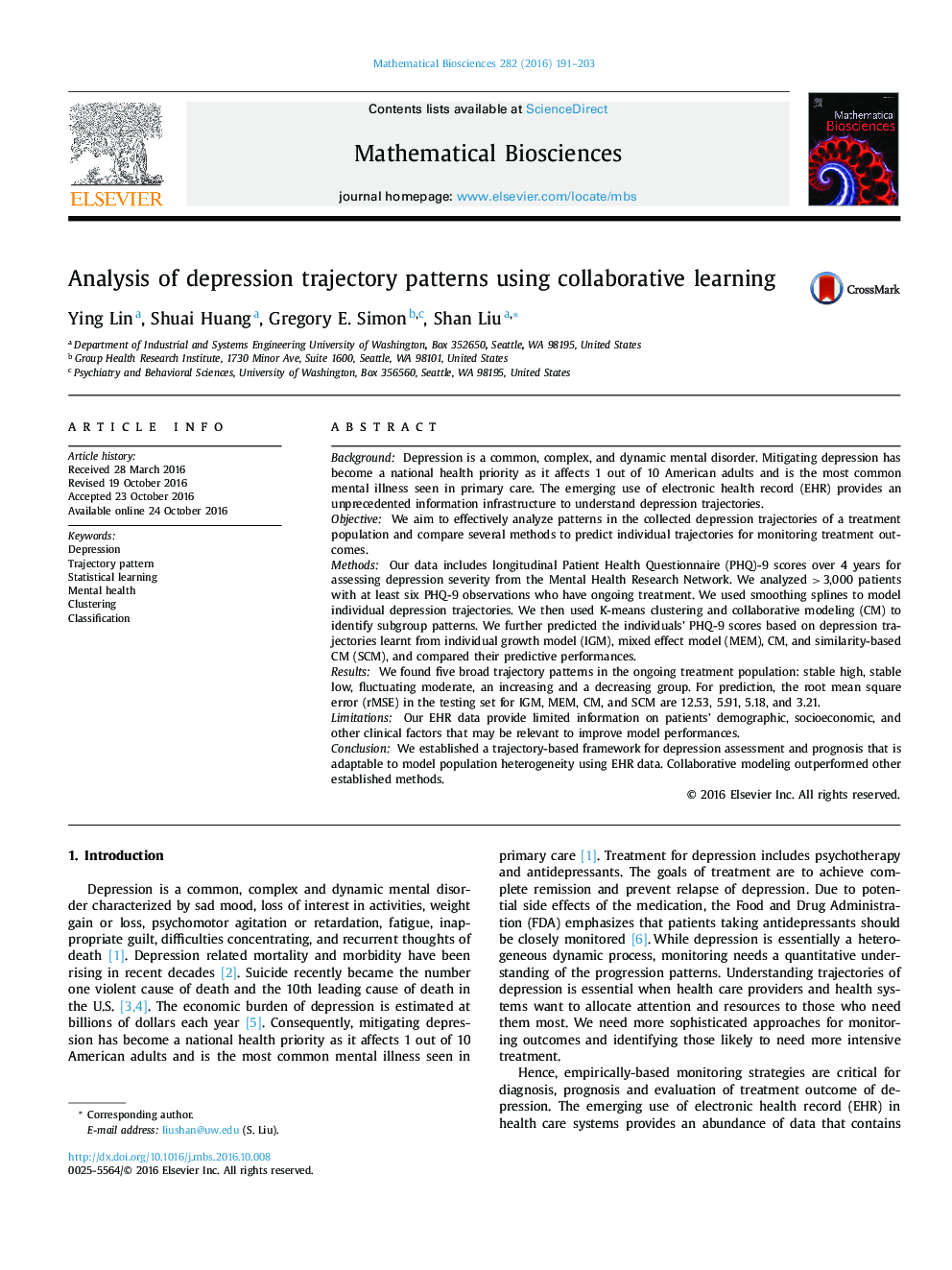| کد مقاله | کد نشریه | سال انتشار | مقاله انگلیسی | نسخه تمام متن |
|---|---|---|---|---|
| 4499812 | 1623998 | 2016 | 13 صفحه PDF | دانلود رایگان |
• Depression is a heterogeneous process and knowledge on progression is limited.
• Study creates a trajectory-based framework for depression assessment over time.
• Data contains electronic health record of longitudinal depression severity scores.
• Five broad trajectory patterns are found in an ongoing treatment population.
• Collaborative learning model outperforms other established methods.
BackgroundDepression is a common, complex, and dynamic mental disorder. Mitigating depression has become a national health priority as it affects 1 out of 10 American adults and is the most common mental illness seen in primary care. The emerging use of electronic health record (EHR) provides an unprecedented information infrastructure to understand depression trajectories.ObjectiveWe aim to effectively analyze patterns in the collected depression trajectories of a treatment population and compare several methods to predict individual trajectories for monitoring treatment outcomes.MethodsOur data includes longitudinal Patient Health Questionnaire (PHQ)-9 scores over 4 years for assessing depression severity from the Mental Health Research Network. We analyzed > 3,000 patients with at least six PHQ-9 observations who have ongoing treatment. We used smoothing splines to model individual depression trajectories. We then used K-means clustering and collaborative modeling (CM) to identify subgroup patterns. We further predicted the individuals’ PHQ-9 scores based on depression trajectories learnt from individual growth model (IGM), mixed effect model (MEM), CM, and similarity-based CM (SCM), and compared their predictive performances.ResultsWe found five broad trajectory patterns in the ongoing treatment population: stable high, stable low, fluctuating moderate, an increasing and a decreasing group. For prediction, the root mean square error (rMSE) in the testing set for IGM, MEM, CM, and SCM are 12.53, 5.91, 5.18, and 3.21.LimitationsOur EHR data provide limited information on patients’ demographic, socioeconomic, and other clinical factors that may be relevant to improve model performances.ConclusionWe established a trajectory-based framework for depression assessment and prognosis that is adaptable to model population heterogeneity using EHR data. Collaborative modeling outperformed other established methods.
Journal: Mathematical Biosciences - Volume 282, December 2016, Pages 191–203
